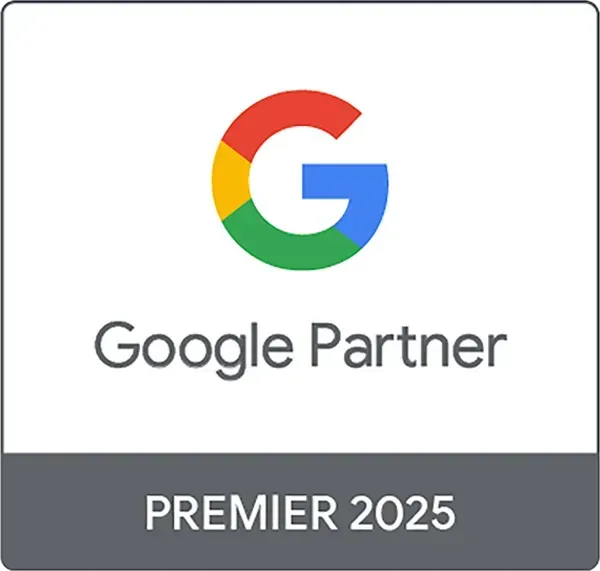You don’t need a bigger budget—you need a smarter one.
SaaS businesses often have a marketing team in place but struggle with focus, direction, or the bandwidth to prioritize high-impact activities. Sound familiar?
That’s where marketing budget optimization becomes essential. This article shares 10 practical ways to optimize your marketing budget and explores how partnering with a fractional agency like Dayta ensures your dollars go further.
At the end of this article, you’ll have gained practical insights on how to align your spend with strategic goals, avoid costly missteps, and make confident, results-driven decisions.
Table of Contents
- Are you clear on your business goals?
- How do you evaluate your current marketing position?
- Have you built a marketing wishlist?
- Are your priorities balanced between quick wins and long-term growth?
- Are you budgeting based on impact, not habit?
- Are you avoiding common traps that waste budget?
- Have you explored flexible pricing and execution options?
- Are you investing in foundational systems?
- Is there room in your budget for experimentation?
- Could a fractional partner fill your gaps more effectively?
1. Are you clear on your business goals?
Define your top-level goals: Are you focused on growing revenue? Increasing profitability? Expanding into new markets or consolidating existing ones? You may be preparing for a future exit or targeting specific products or services for growth.
Prioritize based on what matters most right now while staying aligned with your longer-term strategy. Clear business goals will shape your marketing objectives and determine where your budget will have the most impact.
2. How do you evaluate your current marketing position?
Start by evaluating your internal landscape. How big is your team? What's your cash flow like? Are you in a stage of aggressive growth or steady scaling? These elements influence how agile and ambitious your marketing plan can be.
Next, consider external factors. What’s happening in your industry? Are competitors increasing ad spend? Is the market becoming saturated, or are new opportunities emerging?
Your company’s size, maturity, and profitability will shape your ability to pursue high-impact strategies.
3. Have you built a marketing wishlist?
Imagine you had unlimited time, budget, and bandwidth—what marketing tactics would you pursue?
Capture all those ideas. Get input from other teams, not just marketing. Then, document and categorize them. Estimate the costs, tools, and people required to bring each idea to life.
Creating a wishlist gives you a vision for what’s possible and helps you identify the investments most aligned with your business goals. Categorize your ideas into 'need to have,' 'nice to have,' and 'bucket list' items—this will help you narrow down what gets funded now versus what can wait.
4. Are your priorities balanced between quick wins and long-term growth?
Short-term wins, such as a targeted ad campaign or a timely event, can deliver quick returns and build momentum. Long-term initiatives like SEO or brand development take more time but provide lasting value and stability.
The key is to strike a healthy balance. A budget that leans too heavily in one direction risks missing growth opportunities in the other. And while it might be tempting to stick with last year’s plan, marketing is not a set-it-and-forget-it process. Your business evolves, and your goals shift—your marketing budget should too.
5. Are you budgeting based on impact, not habit?
Take a critical look at the line items you've carried over year after year. Are they still delivering meaningful results? Or are they coasting on legacy approval?
Each budget item should map directly to a current business goal or produce a measurable outcome. This kind of accountability helps you make informed decisions about what stays and what goes. Optimizing your marketing budget means letting go of "this is how we've always done it" and focusing instead on "this is what actually works."
6. Are you avoiding common traps that waste budget?
Watch out for these common budgeting missteps:
- Locking yourself into a rigid plan with no room to adapt
- Trying to solve business problems with marketing alone
- Betting big on a brand new tactic before testing it
- Focusing all your spend on awareness without nurturing or conversion plans
Your budget should allow flexibility to respond to performance data, changing priorities, and new opportunities.
7. Have you explored flexible pricing and execution options?
Marketing isn’t one-size-fits-all, and neither is how you resource it. You can price out projects with freelancers, build an in-house team, or partner with a fractional agency to fill in the gaps of your in-house team.
Each approach has pros and cons depending on your goals, timeline, and internal expertise. Consider mixing and matching to create a solution that fits your strategy and budget.
8. Are you investing in foundational systems?
Before launching new campaigns, make sure your foundation is solid. This includes your CRM, marketing automation tools, and analytics setup.
These systems ensure your campaigns are trackable, measurable, and scalable. Without them, it’s nearly impossible to attribute results or optimize effectively, making even well-funded marketing less efficient.
9. Is there room in your budget for experimentation?
Innovation often starts with a test. Carving out a portion of your budget for experimentation lets you try new platforms, formats, or messaging with limited risk.
Don’t be afraid to pilot an idea, measure the impact, and iterate. Some of your best-performing tactics may emerge from small, calculated tests.
10. Could a fractional partner fill your gaps more effectively?
If your internal team is stretched thin or lacks deep expertise in certain areas, a fractional marketing partner can be a smart, scalable solution. Partnering with an agency like Dayta gives you access to senior-level strategy, creative execution, and channel expertise, without the overhead of hiring full-time staff.
A fractional partner can step in to lead high-stakes initiatives, provide specialized support, or simply give your existing team the bandwidth to focus on what they do best. Whether you’re launching a campaign, navigating a transition, or building a long-term strategy, this model helps you stay agile, efficient, and results-driven.
Maximize Your Marketing Budget Optimization Strategy with Dayta
Marketing budget optimization is not about cutting costs. It is about directing your resources toward what actually drives business outcomes. By focusing on strategic goals and performance-based decision-making, you can eliminate wasted spend and unlock better results.
Want deeper insights about how to approach marketing budgets with confidence and clarity? Watch Dayta’s Budgeting for Impact webinar today!
Frequently Asked Questions
How often should I reevaluate my marketing budget?
Quarterly at minimum—especially if goals shift or campaign performance reveals new opportunities.
What are the signs that I need a fractional marketing partner?
Limited internal bandwidth, lack of senior strategy, or inconsistent campaign results.
Can budget flexibility really make that big of a difference?
Yes. Reserving funds for emerging opportunities can give you a competitive edge when agility counts.
Share This Post





